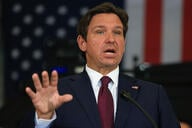You have /5 articles left.
Sign up for a free account or log in.
A day before the federal government's controversial new rules governing vocational programs were set to take effect, a federal judge on Saturday invalidated one of its key elements, blocking enforcement of much of the regulatory framework.
The ruling by Judge Rudolph Contreras, which came just days after the Education Department released its first set of data produced by the new regulations, largely upheld the Education Department's legal right to craft new regulations aimed at ensuring that vocational programs prepare students for "gainful employment," saying that the agency had "set out to address a serious policy problem, regulating pursuant to a reasonable interpretation of its statutory authority."
The judge's decision also supports many aspects of the department's decision making process, rejecting assertions in a 2011 lawsuit by the Association of Private Sector Colleges and Universities that the agency had overstepped its bounds in regulating in this area and chosen arbitrary measures to hold for-profit and other vocational programs accountable. The association is the primary trade group for for-profit colleges, which were the primary targets (and victims, as they perceived it) of the new rules.
Contreras concluded, too, that the Obama administration had identified sound reasons for choosing two of the three standards the new rule would apply to vocational programs, which link the size of former students' debt payments to their discretionary and total income levels, respectively.
But Contreras ruled that the Education Department had failed to provide sufficient evidence to justify the third standard: its requirement that at least 35 percent of a program's former students repay their federal student loans.
"The debt-to-income standards were based upon expert studies and industry practice -- objective criteria upon which the department could reasonably rely," Contreras wrote. "The debt repayment standard, by contrast, was not based upon any facts at all. No expert study or industry standard suggested that the rate selected by the department would appropriately measure whether a particular program adequately prepared its students. Instead, the department simply explained that the chosen rate would identify the worst-performing quarter of programs."
"Why the bottom quarter?" the judge continued. "Because failing fewer programs would suggest that the test was not 'meaningful' while failing more would make for too large a 'subset of programs that could potentially lose eligibility.' That this explanation could be used to justify any rate at all demonstrates its arbitrariness. If the department had chosen to disqualify the bottom ten percent of programs, or the bottom half, it would have offered the same rationale: the rate chosen disqualified the percentage of programs that it was intended to disqualify, and to have disqualified fewer would have made the test too lenient while disqualifying more would have made the requirement too stringent. This is not reasoned decisionmaking."
While the judge found that the department had failed to justify only one of its three standards for judging vocational programs, the impact of that decision was potent, because he also concluded that the three standards are "intertwined." "Because the Department has repeatedly emphasized the ways in which the debt repayment and debt-to-income tests were designed to work together,... the tests are obviously “intertwined” -- and so the court cannot sever one from the others." As a result, Contreras vacated the entire debt measure rule.
He did not stop there. The gainful employment rule's reporting requirements, which require institutions to report to the department the student-level data needed to calculate the debt measures, were also struck because they depend on the now-invalid loan repayment metric. So, too, was the rule's enforcement mechanism, which allows the department to approve (or reject) programs for federal aid eligibility based on whether they meet the new standards. (The judge left in place the disclosure standards that require institutions to provide students with data on their performance.)
Exactly what happens next is unclear. Steve Gunderson, the president of the for-profit-college group, said in a statement Sunday that he hoped "that the era of litigation is over," but that is highly unlikely. While the judge's ruling undercuts the gainful employment rule in meaningful ways, and seriously impairs the department's ability to enforce the rule in the near term, it also reinforced the department's right to regulate in this way and on these issues.
As a result, the department is likely either to try to return to court to try to provide a better justification for the loan repayment standard, or to hold a new round of negotiations over gainful employment to try to tweak it to conform to the court's findings. A department spokesman said the agency was considering its options.





